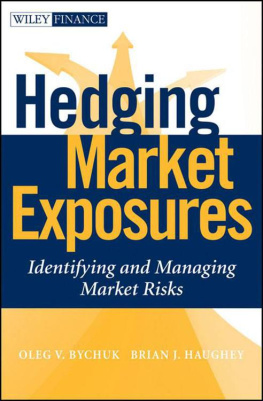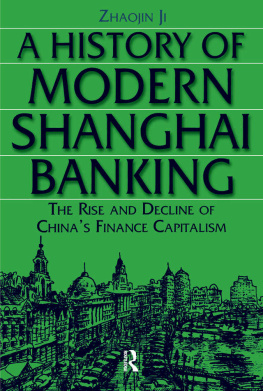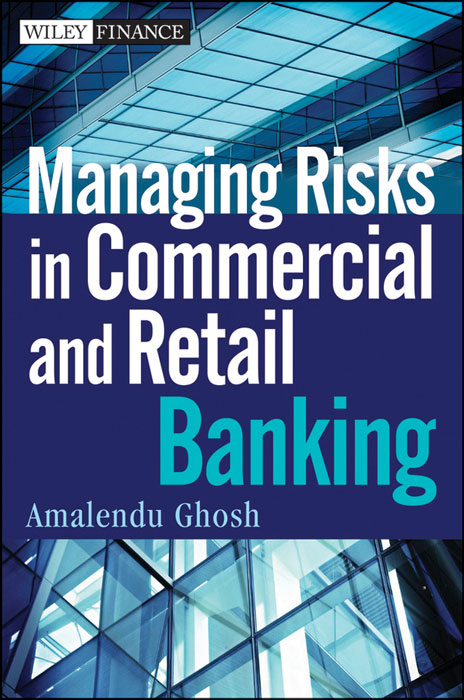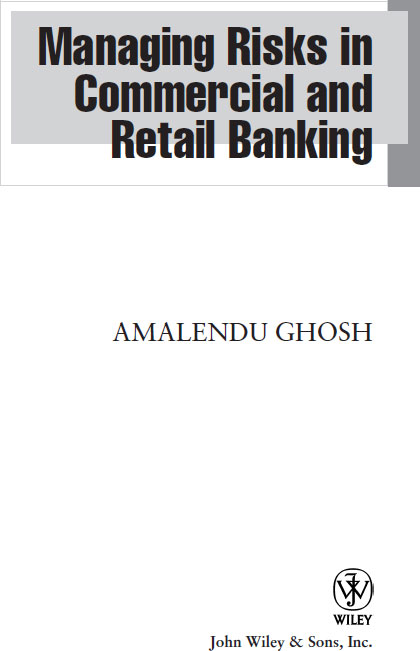Founded in 1807, John Wiley & Sons is the oldest independent publishing company in the United States. With offices in North America, Europe, Australia and Asia, Wiley is globally committed to developing and marketing print and electronic products and services for our customers professional and personal knowledge and understanding.
The Wiley Finance series contains books written specifically for finance and investment professionals as well as sophisticated individual investors and their financial advisors. Book topics range from portfolio management to e-commerce, risk management, financial engineering, valuation and financial instrument analysis, as well as much more.
For a list of available titles, visit our Web site at www.WileyFinance.com .
Copyright 2012 John Wiley & Sons Singapore Pte. Ltd.
Published in 2012 by John Wiley & Sons (Asia) Pte. Ltd.
1 Fusionopolis Walk, #07-01, Solaris South Tower, Singapore 138628
All rights reserved.
No part of this publication may be reproduced, stored in a retrieval system, or transmitted in any form or by any means, electronic, mechanical, photocopying, recording, scanning, or otherwise, except as expressly permitted by law, without either the prior written permission of the Publisher, or authorization through payment of the appropriate photocopy fee to the Copyright Clearance Center. Requests for permission should be addressed to the Publisher, John Wiley & Sons (Asia) Pte. Ltd., 1 Fusionopolis Walk, #07-01, Solaris South Tower, Singapore 138628, tel: 65--6643--8000, fax: 65--6643--8008, e-mail: .
This publication is designed to provide accurate and authoritative information in regard to the subject matter covered. It is sold with the understanding that the Publisher is not engaged in rendering professional services. If professional advice or other expert assistance is required, the services of a competent professional person should be sought. Neither the author nor the Publisher is liable for any actions prompted or caused by the information presented in this book. Any views expressed herein are those of the author and do not represent the views of the organizations he works for.
Other Wiley Editorial Offices
John Wiley & Sons, 111 River Street, Hoboken, NJ 07030, USA
John Wiley & Sons, The Atrium, Southern Gate, Chichester, West Sussex, P019 8SQ, United Kingdom
John Wiley & Sons (Canada) Ltd., 5353 Dundas Street West, Suite 400, Toronto, Ontario, M9B 6HB, Canada
John Wiley & Sons Australia Ltd., 42 McDougall Street, Milton, Queensland 4064, Australia
Wiley-VCH, Boschstrasse 12, D-69469 Weinheim, Germany
ISBN 978-1-118-10353-1 (cloth)
ISBN 978-1-118-10355-5 (ebk)
ISBN 978-1-118-10354-8 (ebk)
ISBN 978-1-118-10356-2 (ebk)
Preface
The banking regulatory and supervisory authorities are focusing attention on two key issues: implementation of the new capital adequacy framework in banking institutions and transition to a foolproof risk-based bank supervision system. The New Basel Capital Accord of 2006 is more risk sensitive than the Old Capital Accord of 1988. For the first time, a counterparty rating-based approach has been advocated for regulatory capital assessment. Besides, a new concept of economic capital has been introduced to stick to a capital standard that takes care of unusual losses from severe events.
The New Accord encourages banks to develop internal models for risk rating and risk measurement, strengthen their risk management practices and procedures, and acquire internal capability to assess capital requirements. Concurrently, bank supervisory authorities are taking new initiatives in many countries to focus on a risk-based bank supervision system in order to reduce financial sector vulnerability. The supervisors require banks to undertake self-assessment of their risk profile, identify vulnerabilities in their operations, and improve risk management practices to protect their capital base and ensure long-term solvency. This book takes into account New Capital Accord issues, including those specified in the 2010 Basel Committee response to the global financial crisis, and deals with important aspects of risk management in one place.
Commercial banks, financial institutions, bank auditors, chartered accountant firms, banks training colleges, and students who pursue financial risk management courses will find this book useful. The book focuses on practical aspects of risk management; covers risk managementrelated topics and credit, market, and operational risks; and contains modalities for establishing internal models for risk rating of banks counterparties and rating of branch offices for audit prioritization. It contains a balanced mix of concepts, methodologies, and tools pertaining to risk management. Banks that are in the process of implementing New Capital Accord recommendations and the internal and external auditors who are to evaluate independently the soundness of risk management systems and the capital adequacy calculation process in banks will like this book. The book contains summaries at the end of each chapter.
The book comprises seven parts. The first part deals with conceptual aspects of risks and fundamental principles of risk management and gives an outline of the risk management architecture that banks should have.
The second part identifies credit risk management issues and describes procedures for identification, measurement, and management of credit risk. It deals with the modalities for establishing internal models for risk rating and risk measurement and the problematic issues that arise in establishing the rating system across the organization. The rating-based loan pricing mechanism and credit portfolio review techniques are explained in this part.
The third part describes the market risk management framework and explains the process to identify, measure, and control all forms of market risk. It identifies the causes that accentuate market risks and discusses possible solutions to respond to them.
The fourth part deals with operational risk management and the sources and causes that give rise to operational risk events, and explains in a logical sequence the procedure to make a scientific assessment of operational risk. It identifies the operational risk events that happen in banking institutions and explains the procedure to evaluate the loss-inflicting capacity of those events and assess operational risk in terms of event frequency and impact severity. It discusses the ways and means to tackle significant operational risk events that cause serious business disruption.
The fifth part deals with the risk-based internal audit procedure and describes the sequential steps involved in switching over from a transaction-based to a risk-based audit system. It explains the methodology to compile risk profiles of branch offices of banks and gives an elaboration of the risk-focused audit process and risk-focused report writing technique. Risk-based auditing can be used as a tool to assess the efficacy of risk control systems in a bank. For this reason, this topic has been included in this book.
The sixth part gives an outline of corporate governance. Protection of depositors interest is the key element of corporate governance that determines the codes and ethics that banks should follow. Corporate governance in banks will suffer unless the bank management establishes a sound risk management system to protect the interests of depositors, shareholders, and debt holders. In view of this, this topic has been included in this book.










